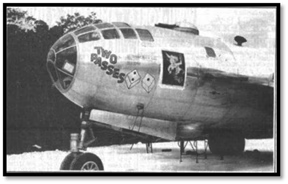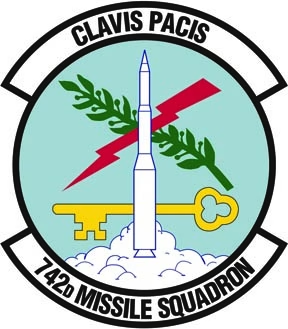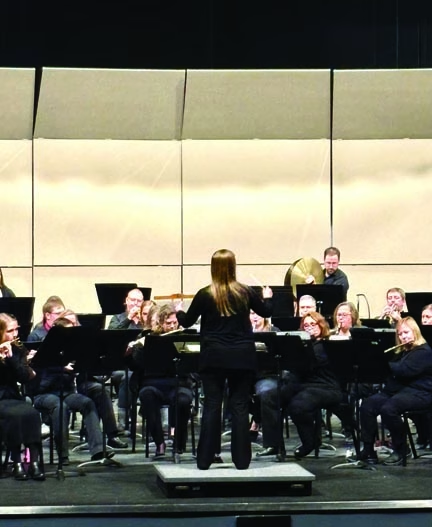Nancy Hvinden
William J. Senger’s story is unique in that he was a decorated pilot both in the Royal Canadian Air Force and in the USAAF. He was born on a farm southwest of Esmond, ND in 1915. His father died in the 1918 influenza epidemic. His mother remarried and the family moved to Harvey where he graduated from high school and worked as a meat cutter and salesman. Not waiting for the United States to enter the war, Senger was one of more than 6,000 United States citizens who went to Canada and joined the RCAF, of these just over 600 were flying overseas by December 7, 1941. Senger enlisted in October 1940 and trained at l bases across Canada. California.
Technically, Canada wasn’t allowed to recruit US residents because of the Neutrality Act, if they fought for a foreign country, they could lose their US citizenship. Moral conviction to fight Nazism won out for many and they took this risk, seeing it as protecting the United States by helping save Great Britain. By December 8, 1941, the two countries started working on arrangements for the US nationals to transfer to the USAAF. This would take many months to work out so the “Yanks” continued to fly and for the RCAF. By 1944 a pardon had been issued for those that had joined allied militaries.
By December 1941 Senger’s squadron was awaiting overseas orders. On December 1, 1941 Sgt. Pilot Senger was a witness when his buddy Pilot Officer Harold E. Brown of Winnipeg and Jessie Margaret McDougall of Rolla, ND were married. Not long after, the two pilots headed for England as bomber pilots. Brown, being Canadian remained in the RCAF and was KIA, fall 1944, over Germany. His body was recovered after the war. Senger flew for RCAF until fall 1943.
After transfer to the 7th squadron in England, Senger’s first sortie as co-pilot was with Lt. John H. Stickell, an American from IL who had also gone to Canada to fly. Both went on to receive recognition with RCAF and USAAF. Stickell transferred to the USAAF spring of 1943 and died from wounds received on a mission in the Marshall Islands, December 1943. He received the Navy Cross and a destroyer, the USS Stickell was named in his honor.
Among the foreign decorations Senger received were the British Distinguished Service Order, British Distinguished Flying Cross, British Pathfinder’s Award, 1939-1942 British Campaign Ribbon, British Allied Defense Ribbon, Canadian Service Ribbon, and the American Volunteer Ribbon (Canada). During his service with the RCAF, Captain Senger flew 46 pathfinder combat missions as pilot of Lancaster and Stirling bombers. One example of a news story about his commendations was found in the Windsor Star newspaper, June 13, 1944, page 6 under the title Awards to Americans. By October 1943, Senger had transferred to the USAAF as a Captain, been processed at Santa Monica, California, assigned to Headquarters AAF Training Command and received commission as an instrument pilot with the 8th Air Force. After more training at Selman Field, Alabama, Lockbourne Army Air Base, Ohio and Alamogordo, New Mexico he was assigned to the 61st Squadron of the 39th Bomb Group as an Airplane Commander and leader of “A” Flight, flying a B-29 Superfortress. He led Crew 21 and the name of their plane was City of Pittsfield, or as they had painted on the nosecone “Two Passes and a Crap.”
Spring 1945 found the crew flying bombing runs over Tokyo from their base in Guam. They had been on the successful raid over Tokyo on April 14, 1945. May 14, 1945 General Curtis Lemay directed 529 B-29s to take off for the daylight incendiary bomb raid of Nagoya. Crew 21, commanded by Captain Senger, along with over 100 planes given the assignment bombing the Mitsubishi airplane motor plant. They were successful in their mission, but flak hit one of the engines.
William J. Senger remained a Captain in the USAAF until 1947. He settled in California, married in 1949 and continued flying as a crop duster, killed in a flying accident in June 1954.
**The B-29 crews were especially fearful of being taken prisoner by the Japanese. Because of the bombing raids, they were called “special prisoners” and treated the worst of all the POWs. Only 5% of US pilot POWs in Japan survived versus 95% of those captured by the Germans.
Following is the summary of events as recalled by crew member Victor R Durrance. It is a public domain document of the Navy in their historical section.
“On the Nagoya mission, our target was the Mitsubishi engine plant. Once on the bomb run, we took a flak burst in our number one engine. Since flying on three engines was quite a common occurrence, we feathered it an flew out to sea. Our course was set straight for Guam, which took us some distance from Iwo Jima. Everyone was fine until the engineer began to transfer fuel to the number two tank, which was consuming more gas due to the disablement of the number one engine. When the transfer pump “burned out” it became obvious that in a short time number two would be out of fuel. From past experience, we knew that a B-29 wouldn’t fly well with two engines out on the same side – especially any distance.
We proceeded to lighten the plane by jettisoning everything we could – ammunition and the like. When number two stopped turning it was quickly feathered, We began to lose altitude despite frantic efforts by Senger and Kowalke. In an effort to further lighten the plane we began ripping out equipment and throwing it overboard, As we worked in the radar compartment, I noticed the radar man lying curled up on the floor. I tried to awaken him with the thought in mind that he could be of help to us, but got no response. I later learned that he had gone into a comatose state when it became obvious that we were going down, (This sort of thing, or similar reactions, happened to quite a few good men when under extreme stress they would reach their breaking point). In this case, the radar operator was filling in as a replacement for Ernest Smith, who was in the hospital on Guam having a cyst removed from his tailbone. His replacement was killed when we hit the water.

As we continued to lose altitude. Senqer ordered us into ditching positions, I think I set a record in getting back to the tail, About that time, someone decided to jettison the bomb bay gasoline tank, normally, the big doors would respond quickly when opening or closing, but that day they refused to close. With the bomb bay doors open and two engines out, we simply stopped flying. We touched down very hard with the doors in an open position, as I recall. We hit the water at about 150 miles per hour, no tail touching, no gentle letdown, but rather a terrific slam into the water and then an instant loss of forward motion, the deceleration force was indescribable. Later I found that my back bore the Imprint of the flight suit fabric and was black and blue from the bruises.
On impact, the belly of the plane was ripped out and the fuselage broke apart just aft of the radar compartment. The tail section, with me, (Durrance) in it, sank immediately. Somehow, on the way down, I managed to exit the escape hatch, pull the CO-2 bottles on my Mae West, and shoot upward to the surface. I then inflated my life raft and climbed aboard. The only sound I heard was the slap of waves against the aircraft wreckage that was slowly submerging nose first. Initially, it appeared that I was the only survivor, but as the broken fuselage tilted upright, I saw Marvin Conlev come shooting out the rear end of the tunnel and plunge into a mass of debris. I was certain he was badly injured, but he escaped without even a cut.
As about the same time, Robert Harrision broke the surface streaming blood from a deep cut above the right eyebrow. Later, in the raft, we found that he also had a broken leg and crushed pelvis. As he struggled toward me in the water, I had the fleeting thought that if he did reach me, he might swamp us both. I comptemplated whacking him on the head with a paddle, but instead reached out, got him by the collar of his flight suit and pulled him up into my lap. In that manner, I paddled around the floating right wing of the aircraft to where the rest of the crew were getting into large eight man rafts. Brook Harris, in his seat-pack raft, began to drift away, all the while pleading for someone to help him. Suddenly, he disappeared from sight in the raging sea. We lashed the two larger rafts together and evenly divided the rest of us between-the two dinghies. Harrison, due to hip injuries, took up fully one end of a raft. In the angry sea, the lashing pulled out of one raft allowing the air to escape. Since I was the smallest man on the crew, I thought I could remain in the deflating raft, however, when the water reached my waist, I was forced to join the others in the one remaining raft. With one end occupied by the severely injured Harrison, there we were jammed together in a tossing life raft in the midst of the hostile Pacific. A quick check indicated that Mervin Stanton, the CFC gunner, and the radar officer were missing, as was Harris, the right gunner. In addition to our crew, we had aboard an airplane commander and flight engineer of a new crew. They were flying this mission with us to observe certain flight and cruise control procedures. (Undoubtedly, they would just as soon have missed this one).

As the raft was, overcrowded, we had only a few inches of it above water. As the seas increased its fury, we had a wall of water enveloping us with nearly every wave. Due to the ingestion of salt water most of us became quite nauseous and had to vomit over the side. With the increasingly high seas, we were concerned that we would be swamped. If this happened, it was a near certainty that Harrison would drown. Conley and I had given him two morphine surettes but they did little to ease his pain. He had now become delirious and thought he was back in Tennessee. In an effort to secure him, I got a firm grip on the belt of his flight suit and a tighter grip on the raft and locked on for the duration of the night. In the morning, I couldn’t let go and Bates had to force both my hands open.
We bobbed along wondering what, if anything, we could do. Conley said he had been transmitting a steady SOS when we were hit. Bates believed we were drifting west due to the flow of the current. If so, we were getting increasingly farther away from the area where a search plane would be likely patrolling. Bates brought ripple of hope, though, when he remarked that we were only seven miles from land. That hope evaporated quickly, however, when he added, ‘Straight down. Someone suggested that we pray. When no one else offered a prayer, I recited the 23rd Psalm.
We were wet, sick, cold and crowded. The A/C that was with us was so sick he could barely move. Several times, in getting to the injured Harrison. I was compelled to crawl over him. He was in almost as bad shape as Harrison. We were still concerned about Harris, who had drifted away from us soon after we had ditched. During the early hours of the morning, Senger rose up and shouted. “Harris.” Suddenly out of the darkness a voice replied, ‘Here.’” It was the missing Harris! He came paddling toward its atop a wave and tied onto the big raft. Harris said he had heard nothing until he heard Senger’s call. It seems as if a voice had told Senger when to call out. Rescue of Crew 21 and sinking of their aircraft.
Daylight found us a rather beat-up lot. Everyone was sore and miserable from being wet and cold all night. Harrison was conscious but numb from the waist down. In the light of day we were able to determine the seriousness of his injuries In the afternoon of that day, some planes spotted us from our own squadron. Initially, they had seen the flashes from our signaling mirrors. Soon, a PBY appeared and circled over us. It wasn’t long before we saw the superstructure of a ship coming toward us at full speed.
Inasmuch, as some air crews had been picked up by Japanese vessels, those of us that still had our 45’s proceeded to chamber a round and be prepared just in case. Fortunately, it was a destroyer escort– the USS Doherty. In its haste to get to us, it almost ran us down. Soon we were taken aboard the rescue vessel accompanied by the cheers of the crew. Though we were ecstatic to see them, we hardly expected such a reception. They had been on rescue duty in the Aleutians duty, and we were the first crew they had picked up alive – hence the cheering. We were treated like royalty and given the best they had to offer. Normally a ship of the Doherty’s size didn’t have a doctor aboard, but fortunately on this patrol, they did. It was a welcome answer to our prayers as Harrison was, in grave condition. He was rushed to sick bay and ice was packed around his waist. By this time, his scrotum had swelled to nearly the size of a volleyball.
We could still see our plane floating nose-down, due to the empty gas tanks. The ship’s Captain thought it best that we sink “773” as it might be a navigational hazard. The Doherty, situated about 100 yards away, commenced firing when the command was given. It seemed as if every gun they had sprang into action. It was the first time the Doherty had fired its guns so the entire crew was ready and eager when it found a target. “Old 773” endured a volley of cannon and small arms fire, then slowly slipped beneath the waves. The crew of the Doherty cheered – all of Crew 21 cried.” Sgt. Stanton killed in the ditching; Capt Senger returned to the States; Lt Harrison was so badly hurt in the ditching, he was returned to the States and disharged with 100% disability; Lt Schneider also left the crew; Lt Smith, Crew 21’s regular radar officer, was ill and didn’t fly this fateful mission. The squadron radar officer had flown in his place and was killed in the ditching.
Read the full “Tribute to Service” feature at https://northernsentry.com/3d-flip-book/tribute-to-service-2025/












